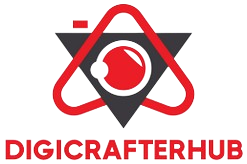The evolution of hard drive technologies has significantly impacted data storage capabilities, enabling more efficient and higher-capacity storage solutions. Perpendicular Magnetic Recording (PMR) is one such advancement that has revolutionized the industry. This article explores how PMR drives differ from older technologies like Longitudinal Magnetic Recording (LMR) in terms of data storage efficiency, performance, and overall benefits.
Understanding Magnetic Recording Technologies
Magnetic recording technologies are essential for storing data on hard drives. These technologies have evolved from the earlier LMR technique to the more advanced PMR methodology.
Longitudinal Magnetic Recording (LMR)
LMR was the standard for hard drive storage for many years. In this method, magnetic bits are aligned horizontally on the surface of the disk, which limits the density of the storage due to spatial constraints.
Perpendicular Magnetic Recording (PMR)
PMR, on the other hand, aligns the magnetic bits vertically. This alignment allows for a greater density of bits per square inch, significantly enhancing the data storage capacity of hard drives without increasing their physical size.
Key Differences Between PMR and Older Technologies
| Feature | LMR | PMR |
|---|---|---|
| Bit Alignment | Horizontal | Vertical |
| Storage Density | Lower | Higher |
| Data Stability | Less Stable | More Stable |
| Energy Efficiency | Less Efficient | More Efficient |
| Production Cost | Higher | Lower |
Advantages of Perpendicular Magnetic Recording
Enhanced Storage Capacity
One of the most significant benefits of PMR is its enhanced storage capacity. By aligning bits vertically, PMR allows for a much higher density of magnetic bits on a disk, leading to larger storage capacities without increasing the physical size of the hard drive.
Improved Data Stability
PMR provides greater data stability compared to LMR. The vertical alignment of magnetic bits makes them less susceptible to demagnetization and data corruption, ensuring more reliable data storage and retrieval.
Increased Energy Efficiency
PMR drives are generally more energy-efficient than their LMR counterparts. The enhanced recording technique requires less power to write and read data, leading to reduced energy consumption and operational costs.
Lower Production Costs
Advancements in PMR technology have also led to lower production costs for hard drives. The ability to pack more data into the same physical space reduces the material and manufacturing expenses, enabling manufacturers to produce high-capacity drives at a lower cost.
Impact on Modern Data Storage Solutions
Cloud Storage
The increased storage capacity and reliability of PMR drives make them ideal for cloud storage solutions, where large amounts of data need to be stored and accessed regularly.
Enterprise Data Centers
Enterprise data centers benefit from PMR technology by being able to store more data in the same physical space, reducing overhead costs and improving overall efficiency.
Consumer Electronics
Consumer electronics, such as laptops and external hard drives, have also benefited from PMR technology by offering larger storage capacities without increasing the size and weight of the devices.
Future Prospects of Magnetic Recording Technologies
As data storage demands continue to grow, the need for more advanced recording technologies becomes increasingly important. PMR has paved the way for future innovations, such as Heat-Assisted Magnetic Recording (HAMR) and Bit-Patterned Media (BPM), which promise even greater storage densities and efficiencies.
Heat-Assisted Magnetic Recording (HAMR)
HAMR is an emerging technology that uses lasers to temporarily heat the disk surface, allowing for even denser data recording. This technique could significantly increase storage capacities beyond what is currently possible with PMR.
Bit-Patterned Media (BPM)
BPM involves placing magnetic bits in pre-defined patterns on the disk surface. This method has the potential to further enhance storage density and reliability, complementing the advancements brought by PMR and HAMR.
Conclusion
Perpendicular Magnetic Recording (PMR) has revolutionized data storage by providing higher capacity, greater stability, improved energy efficiency, and lower production costs compared to older technologies like Longitudinal Magnetic Recording (LMR). As we look towards the future, innovations like HAMR and BPM promise to continue pushing the boundaries of data storage capabilities, ensuring that our ever-growing data needs are met with more sophisticated and efficient solutions.
